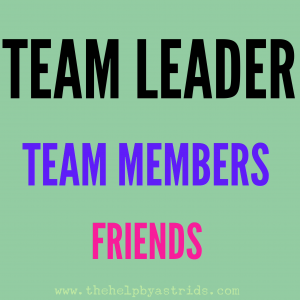 It’s Monday morning and I’m running late. My “Sunday Night Anxiety” has prevented me from getting enough sleep. So here I am, sleep deprived and staring at my closet for a whole 15 minutes, just deciding on what to wear to work. That is time that I do not have.
It’s Monday morning and I’m running late. My “Sunday Night Anxiety” has prevented me from getting enough sleep. So here I am, sleep deprived and staring at my closet for a whole 15 minutes, just deciding on what to wear to work. That is time that I do not have.
My day has just started and I’m already struggling. I have had zero coffee and have equally zero willpower. Why is making a decision on what to wear so hard?
Raise your hand if you’ve had an episode like this before. Is that everyone? Yeah, I thought so.
I know we all want to look like we put some thought and effort into how we look for work. Everyone wants to look professional and “put together” but if we’re spending an hour and fifteen minutes each week just to decide on what to wear, couldn’t we at least take a look at how to make our morning routines more efficient?
In 2015 an article written by Matilda Kahl [1], creative/Art Director at Saatchi & Saatchi in New York went viral and has been shared over 100,000 times. She writes about how she wore the same outfit to work everyday for three years.
She’s not alone in this. In fact, there is a list of people who ascribe to wearing a work uniform. This list includes very famous people like Mark Zuckerberg, Barack Obama, Steve Jobs, Anna Wintour, and Angelina Jolie. Mark Zuckerberg has a closet full of grey shirts. Barack Obama only wears blue or grey suits with a blue-ish tie. As you know, Steve Jobs is famous for that iconic black turtleneck shirt. Anna Wintour wears Manolo Blahnik mules exclusively. Angelina Jolie’s head-to-toe black outfit has been the uniform of choice of the 90’s generation.
Work uniforms are common in a lot of industries like healthcare, aviation, food service, hospitality, etc. But for other industries where they have more freedom over what to wear to the office, more people are finding that a standard iteration of a work uniform makes their mornings easier.
It has something to do with decision fatigue [2]. Studies show that the more choices we make as the day progresses, the harder it is to make decisions. What does a tired brain do to cope? It makes shortcuts. When you’re making important decisions all day, you can’t afford to make short cuts. In a Vanity Fair article, Barack Obama says “I’m trying to pare down decisions. I don’t want to make decisions about what I’m eating or wearing. Because I have too many other decisions to make.”
Sure, we’re not world leaders. But wouldn’t it be nice to save that 15 mins spent on deciding what to wear and actually have a relaxed journey to work instead of rushing. No one’s asking you to make decisions about the nuclear arms code or the state of the nation. However, eliminating one decision making task in the morning can help you streamline your morning routine and help you start your day off like you’ve got it together. Won’t that feel awesome?
Do you have a work uniform? What does that look like? Let us know in the comments! Stay humble and hustle hard.
Written by: Jaie O. – The Help
References:
1 http://www.harpersbazaar.com/culture/features/a10441/why-i-wear-the-same-thing-to-work-everday/
2 http://www.nytimes.com/2011/08/21/magazine/do-you-suffer-from-decision-fatigue.html
 So you’ve been tasked to work in teams. The boss has assigned you together with some other team members to work on a very important milestone project. Because you show the most promising leadership skills and amiability, the boss assigns you to lead this group. As fate would have it (fate has a wicked sense of humour), you’re pooled in together with the most difficult person in the office. As if introducing himself/herself, this person proceeds to say “I don’t work well in groups. I find that too many cooks in the kitchen spoil the broth!” You are off to a rocky start indeed. Yikes!
So you’ve been tasked to work in teams. The boss has assigned you together with some other team members to work on a very important milestone project. Because you show the most promising leadership skills and amiability, the boss assigns you to lead this group. As fate would have it (fate has a wicked sense of humour), you’re pooled in together with the most difficult person in the office. As if introducing himself/herself, this person proceeds to say “I don’t work well in groups. I find that too many cooks in the kitchen spoil the broth!” You are off to a rocky start indeed. Yikes! Whether you’re marketing your business, selling products, or promoting your skills and services, networking is one way to get your name known. The key is to build trust and working connections with your contacts. Every social event can be a chance to network if you play your (business) cards right!
Whether you’re marketing your business, selling products, or promoting your skills and services, networking is one way to get your name known. The key is to build trust and working connections with your contacts. Every social event can be a chance to network if you play your (business) cards right! Are you still using Microsoft Office? Ever dream of breaking away from your reliance on the MS Office Suite? Do you really think you can go “All Google”?
Are you still using Microsoft Office? Ever dream of breaking away from your reliance on the MS Office Suite? Do you really think you can go “All Google”?